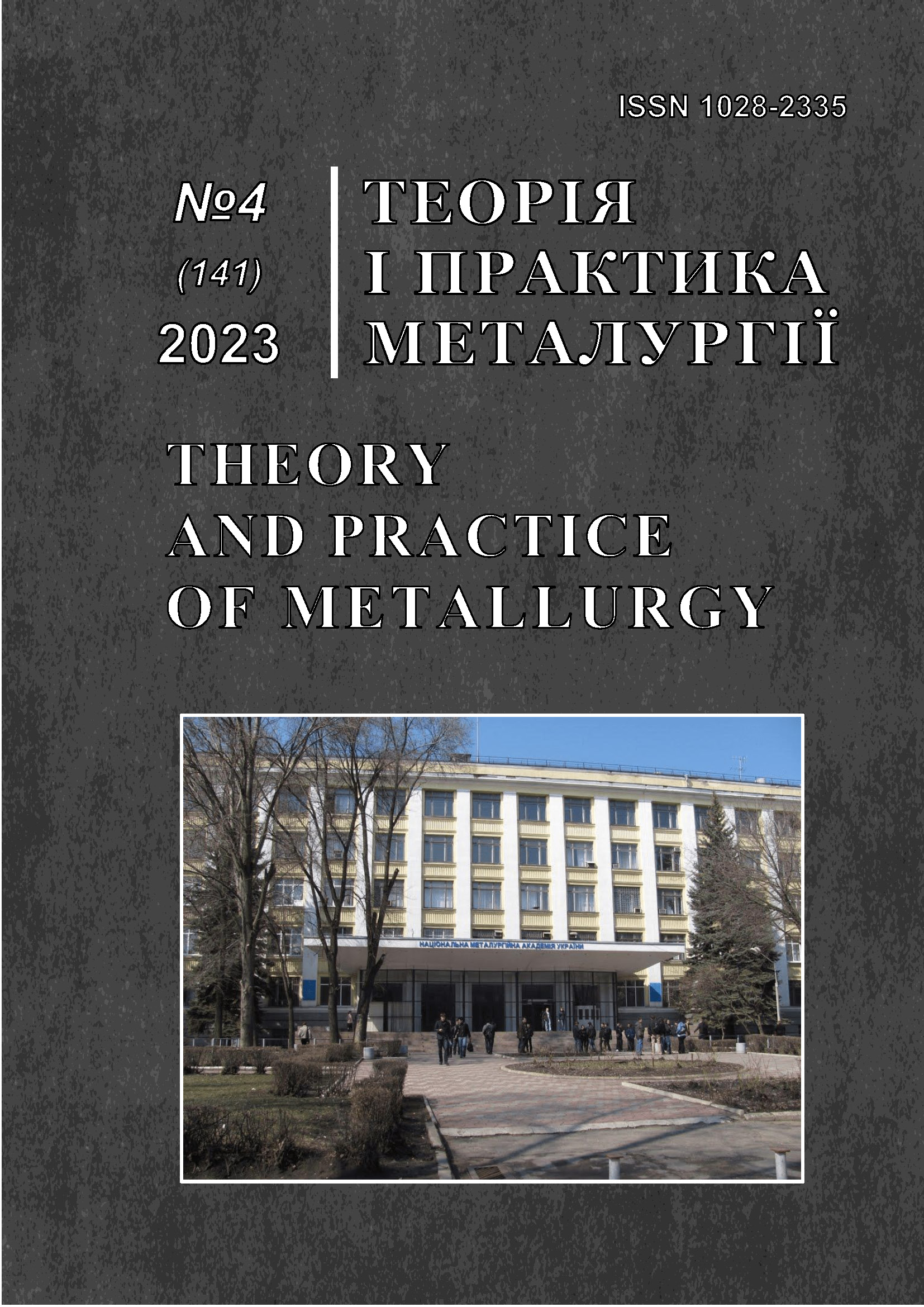Metal-saving technology for manufacturing thick-walled pipes from continuously cast billets on a pilgrim mill
DOI:
https://doi.org/10.15802/tpm.4.2023.05Keywords:
pipe, pilgrim installation, metal saving, pilger hot rolling clad tube, modernization, descalingAbstract
The methods of reducing metal waste during the production of especially thick-walled pipes with D/S<6 h on a 5-12″ polygrim unit at the INTERPIPE NTRP are examined. from non-recast billets. Increases the depletion coefficient of the metal during the rolling of pipes on a plating mill due to the peculiarities of the technology, in order to increase the shape of the front (seed) and rear ends of the pipes, which create the saws makeup head. At this rate of metal, the hour of rolling pipes on a unit with a rolling mill is 50-100 kg per ton of pipes, lower on other units (with automatic, non-interruptible mills). Based on theoretical analysis and experimental data from the current industrial production, it was determined that the method of hot rolling of liners can be used to remove D/S<6 pipes with a clear structure from the metal of finished pipes, including and at the rear ends, similar to the polygrimic head. The results of the investigation can be used for rolling thick-walled pipes with D/S<6 of a wide range of sizes and grades on printing units with minimal waste of metal into the seed and the printing head.
References
Krupman, Yu. G., Lyakhovetsky, L. S., & Semenov, O. A. (1992). Current state of world pipe production. Moscow
Stiefel, R., & Pugh, G. (2023). The Manufacture of Seamless Tubes. Transactions of the American Society of Mechanical Engineers, 49-50. https://doi.org/10.1115/1.4058736
Cold forming for high-quality seamless tubes. https://www.sms-group.com/plants/cold-pilger-mill
Kozlovsky, A. I., Balakin, V. F., & Ugryumov, Yu. D. (2012). State and prospects for the development of the process of hot pilgrim rolling of pipes. Ferrous metallurgy. Bulletin of scientific, technical and economic information, 7, 82-91
Stasevsky, S. L., Balakin, V. F., & Ugryumov, Y. D. (2020). Problems of free rolling of the pilger head and ways to solve them. Collection of scientific works of the Dnipro State Technical University (technical sciences), 8-13
Li, R., Jin, P., Wang, W., Zhang, Ch., Du, X., & Huang, J. (2023). Inner Surface Morphology and Roughness Evolution of Pilgering Thick-Walled Tubes. Materials, 16, 7618. https://doi.org/10.3390/ma16247618
Chung, S.-H., Jeong, S.W., Chung, W., & Joun, M. S. (2023). Realistic finite element analysis model of the pilgering process to deal with initial tube thickness nonuniformity. Journal of Manufacturing Processes, 95, 217-228. https://doi.org/10.1016/j.jmapro.2023.04.015
Genkin, V. Ya., Esaulov, A. T., Staroseletsky, M. I., Pikus, M. I., & Zhuravlev, V. A. (1984). Continuously cast round billets. Moscow
Chernyavsky, A. A., Berezovsky, V. V., & Ugryumov, Yu. D. (1987). Metal saving in the production of oil pipes. Moscow
Stasevsky, S. L., Ugryumov, Yu. D., Garmashov, D. Yu., & Ksenz, A. A. (2013). Ways to reduce technological trim on a pilgrimage camp. Newsletter of NTU "KhPI", 43(1016), 211-220
Balakin, V., Ugryumov, Yu., & Ugryumov, D. (2012). Ways to reduce the mass of the pilger head during hot rolling of pipes. Theory and practice of metallurgy, 1-2, 32-36
Matyko, O., Fartushnyi, R., Mul'chin, V., & Romantsev, B. (2009). Piercing of continuous-cast alloy-steel blanks on a pipe-rolling system with a pilger mill. Steel in Translation, 39,161-163. https://doi.org/10.3103/S096709120902017X.
Gulyaev, Yu. G., & Druyan, V. M. (2002). Steel pipes. Production, application, assortment: reference book. Dnepropetrovsk
Method for removing cartridges: Pat. 94018 Ukraine. appl. 05/12/2014. publ. 10/27/2014. Bull. No. 20
Method for removing cartridges: Pat. 108378 Ukraine. appl. 02/05/2016. seen 07/11/2016. Bull. No. 13
Method of piercing a workpiece on a horizontal hydraulic press: Pat. 99774 Ukraine. appl. 12/22/2014. seen 06/25/2015. Bull. No. 12
Downloads
Published
How to Cite
Issue
Section
License
Copyright (c) 2023 Balakin V.F., Stasevsky S.L., Ugryumov Yu.D., Balakhanova T.V., Ugryumov D.Yu.

This work is licensed under a Creative Commons Attribution 4.0 International License.
Authors retain copyright of the published papers and grant to the publisher the non-exclusive right to publish the article, to be cited as its original publisher in case of reuse, and to distribute it in all forms and media. Articles will be distributed under the Creative Commons Attribution 4.0 International (CC BY 4.0) licence.
Authors can enter the separate, additional contractual arrangements for non-exclusive distribution of the published paper (e.g., post it to an institutional repository or publish it in a book), with an acknowledgement of its initial publication in this journal.




